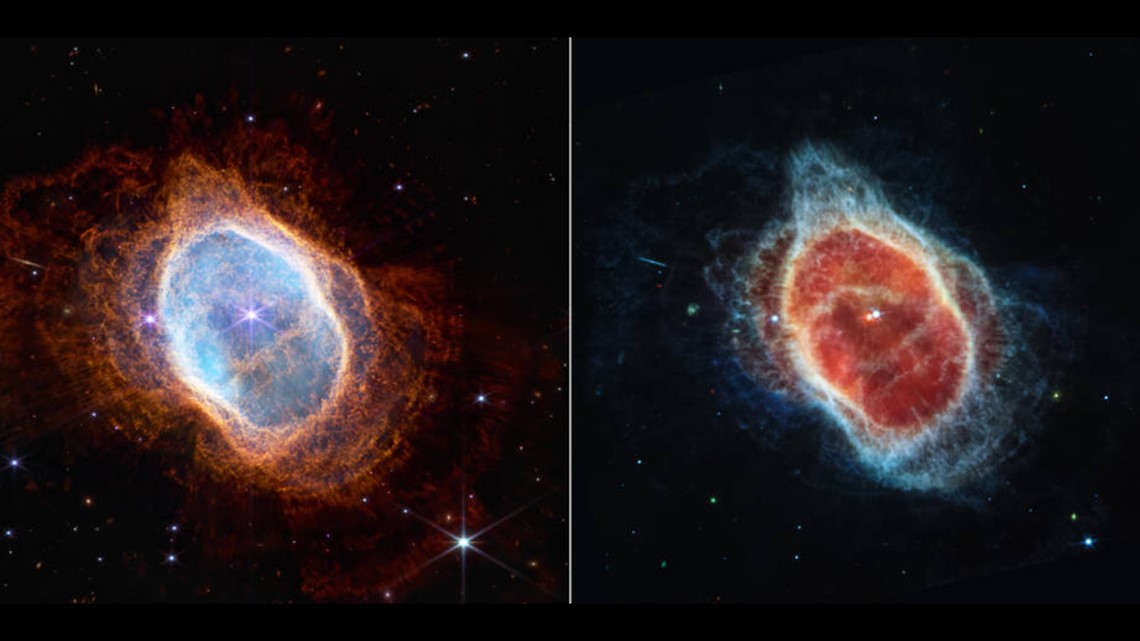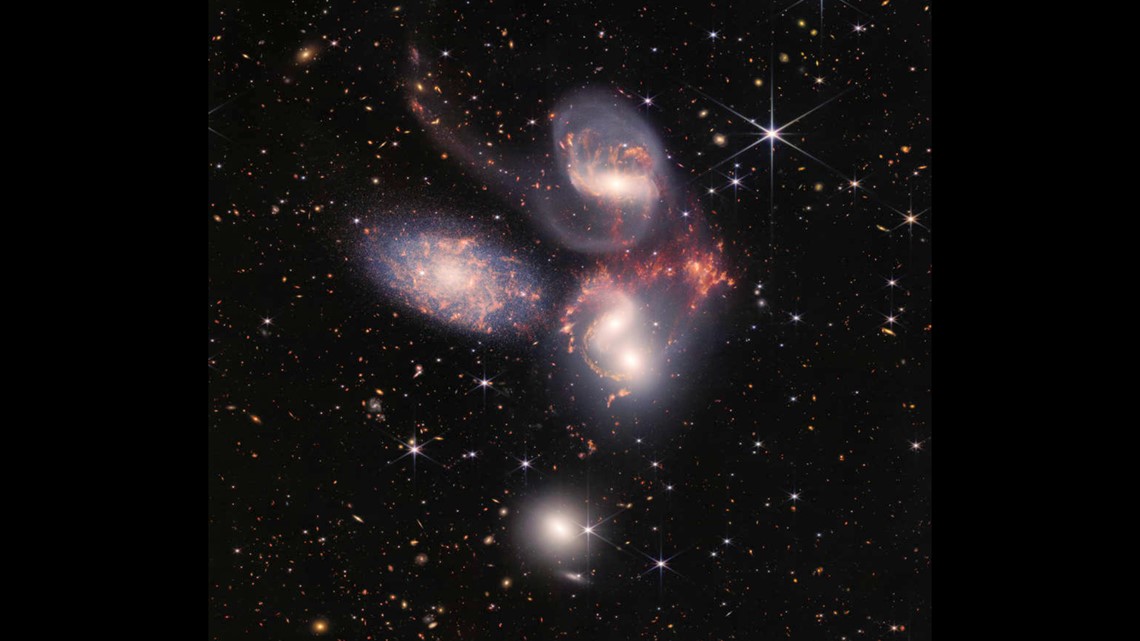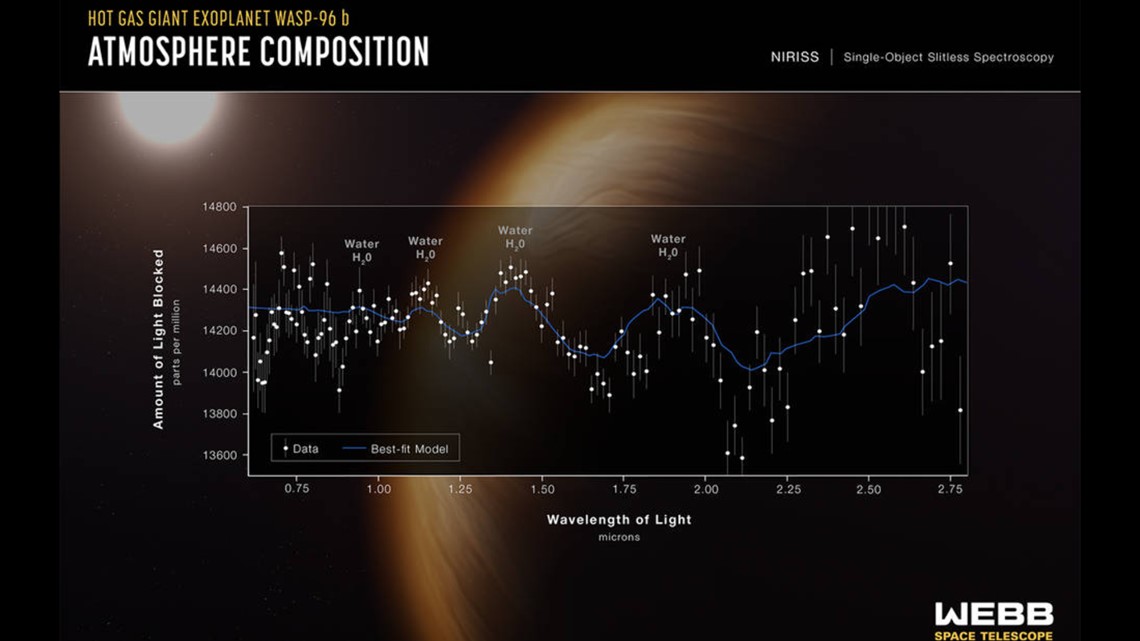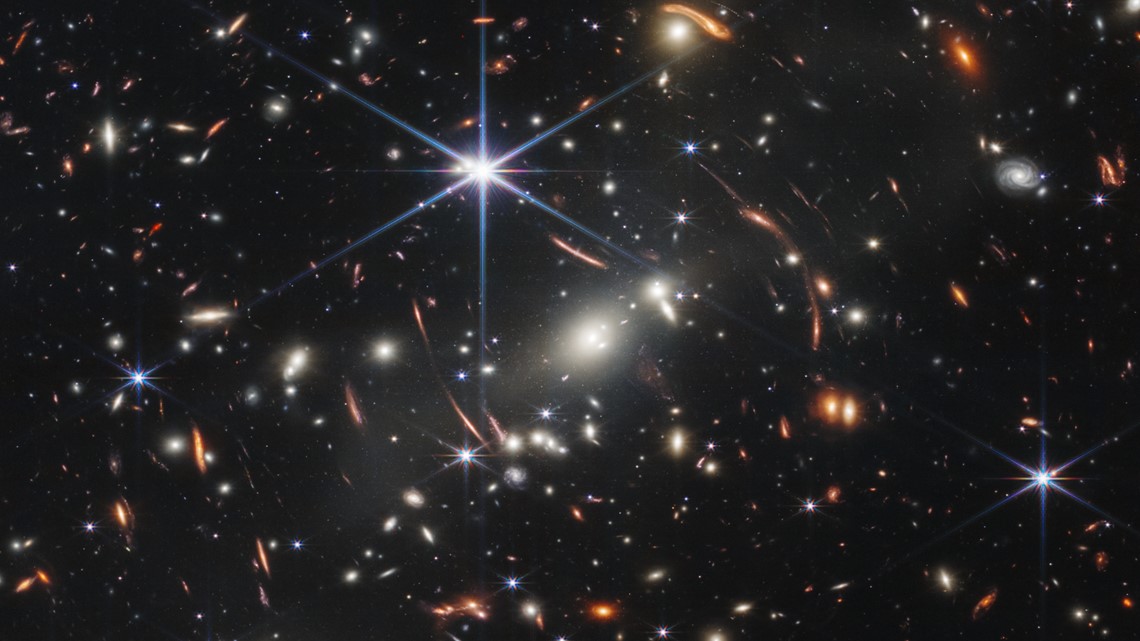DENVER — Scientists wowed astronomers and ordinary spectators alike Tuesday with the first set of full-color images from the James Webb Space Telescope, the largest, most powerful and most complex space science telescope ever built.
Images included a view of a giant gaseous planet outside our solar system, two images of a nebula where stars are born and die in spectacular beauty, and an update of an image of five tightly clustered galaxies that dance around each other.
Two cameras aboard Webb captured the latest image (pictured below) of a planetary nebula known informally as the Southern Ring Nebula, which is approximately 2,500 light-years away, according to NASA.


Another image shows a visual grouping of five galaxies in a cosmic dance over 290 million light-years away known as Stephan's Quintet. It's an image some might recognize as being featured in the 1946 holiday film "It's a Wonderful Life."
"This enormous mosaic is Webb’s largest image to date, covering about one-fifth of the Moon’s diameter," NASA said on its website. "It contains over 150 million pixels and is constructed from almost 1,000 separate image files."


NASA said Webb captured the distinct signature of water, along with evidence for clouds and haze, in the atmosphere surrounding a hot, puffy gas giant exoplanet orbiting a distant Sun-like star.


The multi-billion dollar project has a Colorado connection. Broomfield-based Ball Aerospace (part of Ball Corporation, the namesake of Denver's Ball Arena) designed and built the advanced optical technology and lightweight mirror system that enables Webb to detect light from the first stars and galaxies.
President Joe Biden revealed the first full-color image from the telescope on Monday. It shows the farthest humanity has ever seen in both time and distance, closer to the dawn of the universe and the edge of the cosmos.


The rest of the images, as well as scientific data, were released Tuesday after six months of preparation, which includes calibrating the telescope's instruments and aligning its mirrors.
“As we near the end of preparing the observatory for science, we are on the precipice of an incredibly exciting period of discovery about our universe," Webb program scientist Eric Smith said in a statement. "The release of Webb’s first full-color images will offer a unique moment for us all to stop and marvel at a view humanity has never seen before. These images will be the culmination of decades of dedication, talent, and dreams – but they will also be just the beginning.”
NASA said it's worked with the European Space Agency (ESA), the Canadian Space Agency (CSA) and the Space Telescope Science Institute (STScI) for more than five years to decide what Webb should look at first.
“Our goals for Webb’s first images and data are both to showcase the telescope’s powerful instruments and to preview the science mission to come,” said astronomer Klaus Pontoppidan, Webb project scientist at STScI. “They are sure to deliver a long-awaited ‘wow’ for astronomers and the public.”
Launched on Christmas Day 2021 and located nearly a million miles from Earth, the telescope is so powerful that it is difficult to predict exactly how the first images will look, NASA said.
“Of course, there are things we are expecting and hoping to see, but with a new telescope and this new high-resolution infrared data, we just won’t know until we see it,” said STScI’s lead science visuals developer, Joseph DePasquale.
Each image is available on NASA's website, as well as on Facebook, Twitter, YouTube, Twitch, and Dailymotion.
For more information about Webb's current status, visit the "Where is Webb?" tracker.
SUGGESTED VIDEOS: Latest from 9NEWS

